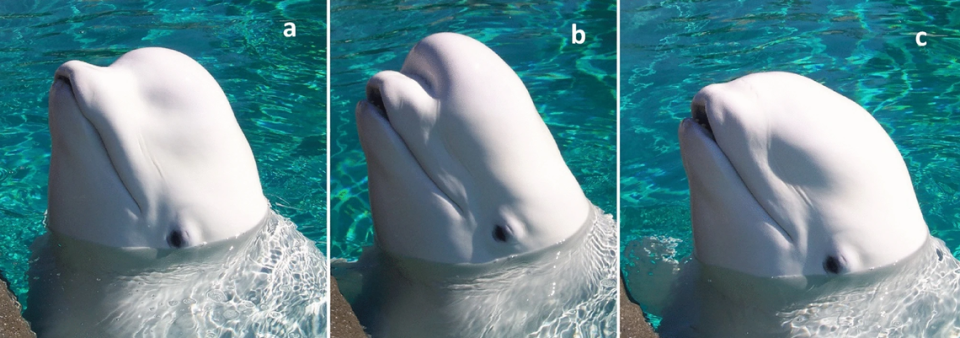Beluga whales have unique ability to change head shape. Now, researchers may know why
You’ve heard of talking heads on TV. It turns out, they’re also under the sea.
Beluga whales appear to communicate with each other by contorting their heads into various shapes, new research reveals.
A variety of identifiable shapes have now been identified and linked with different behaviors, including courtship and play, according to a study published March 2 in the journal Animal Cognition.
It’s long been understood that the animals possess an ability — unique among whales — to visibly change the appearance of their heads by moving a lump on their foreheads known as a melon, which are used for echolocation.
But the purpose of such behavior has, until now, largely remained unstudied.
By observing four beluga whales at Mystic Aquarium in Connecticut, researchers at the University of Rhode Island set out to demystify this phenomenon.

After video-recording the animals for one year — between 2013 and 2014 — researchers discovered that the different head shapes likely serve as a form of purposeful visual communication.
Five specific shapes — the majority of which were performed in view of other whales — were identified. They were labeled as: flats, lifts, presses, pushes and shakes.
The shake and press shapes seemed to be associated with sexual and courtship behavior, while others were not linked with specific behaviors, “perhaps indicating more flexible usage,” researchers said.
The findings are not exclusive to the beluga whales at Mystic Aquarium, as the same five head shapes have also been documented among belugas in Canada.
“Although significant questions remain due to the small sample size and limited behavioral and social contexts observed in this study, these findings suggest that melon shapes carry some of the indicators of intentional communication,” researchers concluded.
‘Golden’ predator — the source of legends — caught on trail cam in Thailand. See it
‘Rare’ ocean predator — with ‘blade-like teeth’ — seen off coast of UK, photo shows
Fanged creatures with ‘medically significant’ venom found in China. See the new species

